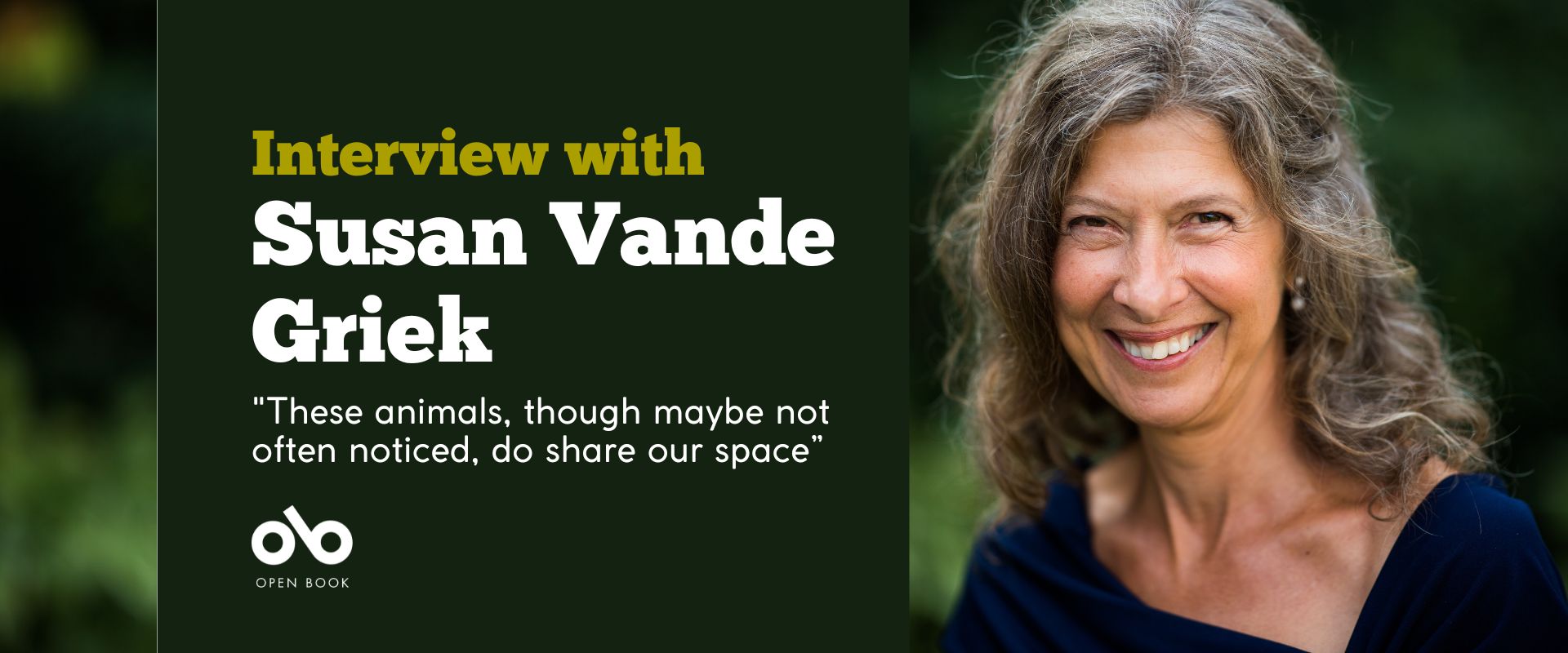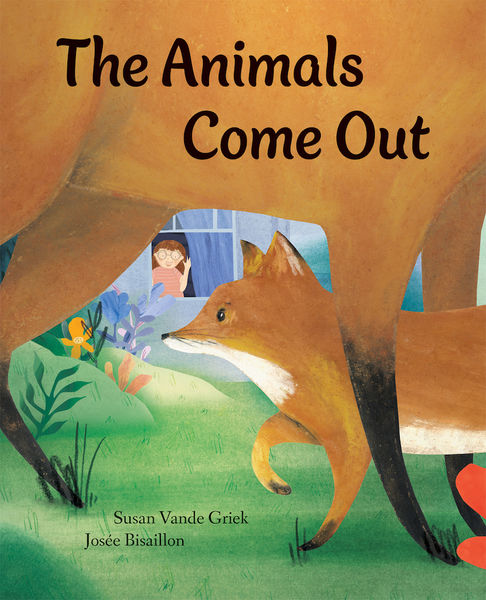Susan Vande Griek on How the Reemergence of Urban Animals Around the World Inspired Her New Picture Book
Anyone who has ever seen a deer, fox, or other skittish wildlife knows that your best bet to catch a glimpse is to stay still and quiet – to pretend, in essence, that you're not there.
In The Animals Come Out (Groundwood Books, illustrated by Josée Bisaillon) by Susan Vande Griek, Griek takes this idea one step further and explores, to delightful effect, what might happen if we all stayed hidden and let the animals come where they may.
Inspired by the reemergence of urban wildlife around the world during the early days of the COVID-19 pandemic—when animals experienced a lull in human interruptions of their environments for the first time in a long period—The Animals Come Out imagines a world of wonder running in tandem with ours, in which animals hop, waddle, slither, and prance into our everyday surroundings.
Griek's series of poems describe the animals and their adventures through sidewalks and backyard gardens, under streetlights and stop signs, with the awe and joy that comes from a genuine love for our furred, winged, and scaled friends. A poignant reminder of our shared world and our responsibilities to other creatures, The Animals Come Out is a poetic love letter to all the other animals, however hidden they might currently be, with whom we live.
We spoke to Susan about writing The Animals Come Out and her process, and she told us about a chance news story that ended up inspiring the book, how lockdown affected her writing process, and what she does when she's stuck on a poem.
Open Book:
Tell us about your new book and how it came to be.
Susan Vande Griek:
My new book is titled The Animals Come Out and the idea for it came during the pandemic. I was sitting at home, like many other people, reading a news story about the different animals that were being noticed in cities and towns across the world, now that people were often inside, not out. There were wild goats in a town in Wales, deer roaming in numerous towns in Canada, Japan, and England, and more sights and sounds of birds everywhere.
My son-in-law, who had brought the story to my attention, suggested a book about such animals might interest kids and I agreed.
I first wrote a manuscript aimed at older children, with a series of poems focused on the different animals being seen in different places around the world. Then I thought I’d try a more local focus with more common animals that younger kids would know and which might better fit a picture book. Again I wrote a series of poems, this time about deer, foxes, porcupines, ducks. I also introduced the idea that these animals, though maybe not often noticed, do share our space.
I sent both versions of the manuscript to my editor and we both decided this second one was the better one. We also both liked the idea of asking Josée Bisaillon if she would illustrate it and are so happy with her colourful and fun artwork that accompanies the poems.
Your CanLit News
Subscribe to Open Book’s newsletter to get local book events, literary content, writing tips, and more in your inbox
OB:
What was the strangest or most memorable moment or experience during the writing process for you?
SVG:
I guess the most memorable thing during the writing of the manuscript was the experience of lockdown. No place to go, no one to see, no distractions, no interruptions. You might just as well sit down and work on something and perhaps that made the process easier, quicker? It was also the lockdown that led to the animals coming out, that led to writing the story, which led to the book.
OB:
What do you need in order to write – in terms of space, food, rituals, writing instruments?
SVG:
I don’t really have any set time to write now. Often I wait until I have an idea, maybe brought about by something I’ve read or seen. I will likely do some research and then give that some thought. To work on the manuscript I do need quiet and my own space. I usually hand write something in rough form, trying out ideas, before I go to the computer to work. And I will often go back to long hand when messing around with words and ideas. A cup of coffee or tea always helps the process!
OB:
How do you cope with setbacks or tough points during the writing process?
SVG:
In general if I am stuck I would try two or three different approaches to what I want to write and see what I think works best.
If there is something that I’m finding tough, maybe trying to find the right word in a poem, a word that sounds right, that fits the rhythm, I might brainstorm as many words as I can think of that fit. I might play with the structure rearranging things. Or finally I might just put it away and come back to it all later, after a good walk!
And then there is always my editor who can make suggestions for a change or an idea, which can be a great help.
OB:
What are you working on now?
SVG:
I recently finished (maybe?) two manuscripts, again picture book ideas. One about animals and one about an artist. I have also been writing a few poems. I do find lately that I have been distracted from writing, spending time with grandchildren instead. All good while I’m waiting for a new idea!
________________________________________________________
Susan Vande Griek is the author of several highly acclaimed children’s books. Her picture book Loon, illustrated by Karen Reczuch, was named a USBBY Outstanding International Book and won the Ruth and Sylvia Schwartz Children’s Book Award and the Norma Fleck Award for Canadian Children’s Non-Fiction, among others. She has also written Go Home Bay, illustrated by Pascal Milelli, about the artist Tom Thomson, and An Owl at Sea, illustrated by Ian Wallace. Susan lives in Halifax, Nova Scotia.






